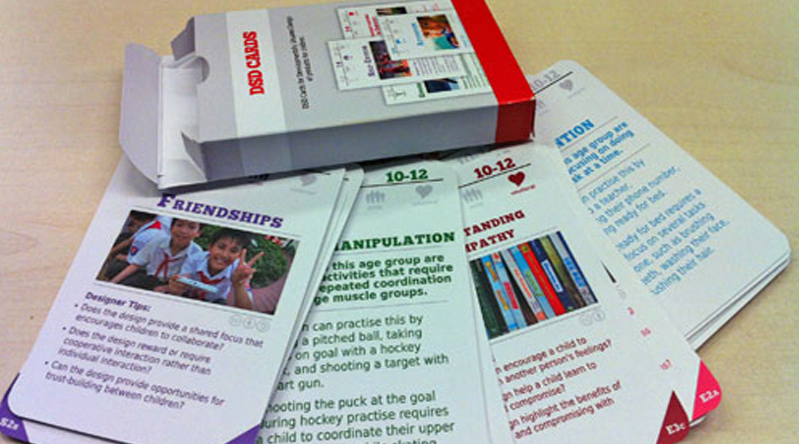
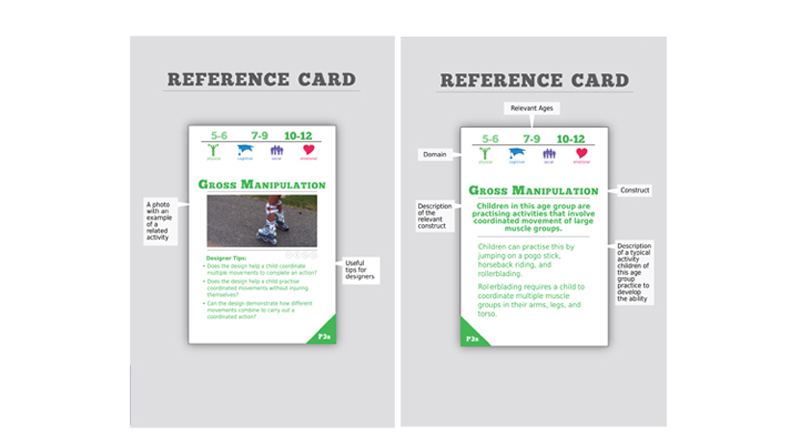
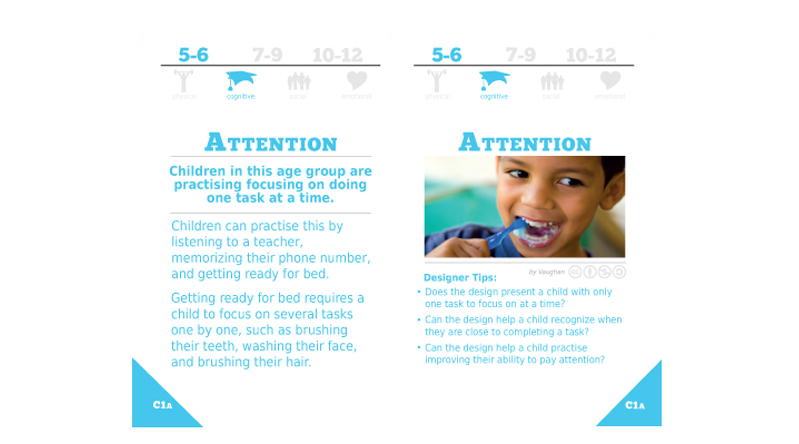

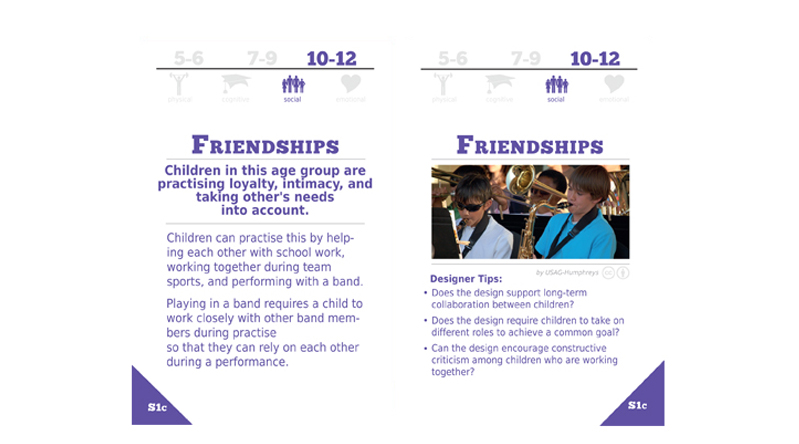
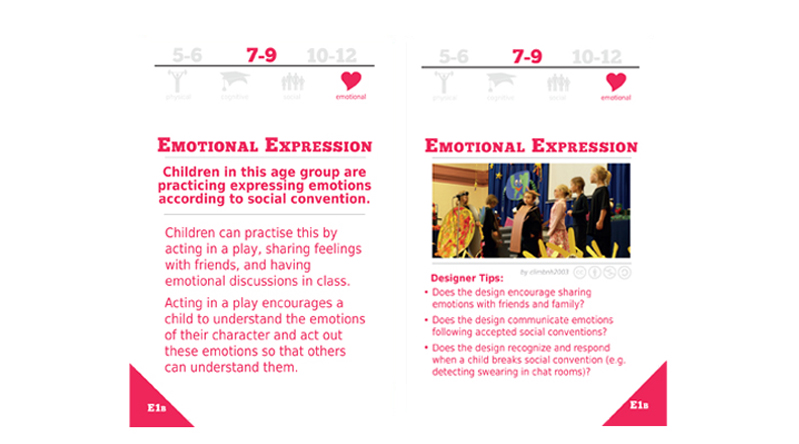
Project Overview
There is a wealth of theoretical knowledge about the developmental abilities and skills of children. However, this knowledge is not readily accessible to designers of interactive products. In this project, we are developing and evaluating developmentally situated design (DSD) cards. DSD cards are a design tool that makes age specific information about children’s developing cognitive, physical, social, and emotional abilities readily accessible for designers.
Download
Click here to download the original card set.
Team
- SSHRC Int. Opp. Fund
- GRAND NCE
Research Creation Summary
Developmentally Situated Design Cards: Designer Tools | Project summary here
Publications
-
2011
Developmentally Situated Design (DSD): Making Theoretical Knowledge Accessible to Designers of Children's Technology Proceedings Article
In: Proceedings of the SIGCHI Conference on Human Factors in Computing Systems, pp. 2531–2540, Association for Computing Machinery, Vancouver, BC, Canada, 2011, ISBN: 9781450302289.
